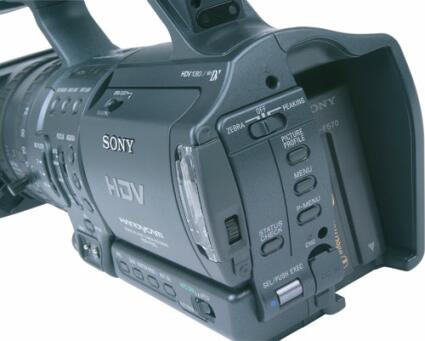Sony HDR-FX1: High Definition Video Has Arrived!
HDV - A Format Is Born
A year ago, Sony, Sharp, Canon, and JVC announced the creation of a new high-definition video standard for consumer camcorders: HDV. HDV uses MPEG-2 image compression with a definition of 1080 lines and a 16:9 aspect ratio. The consortium that was formed around HDV laid the groundwork for the future of the standard.
A year later, Sony has opened the door to high definition by creating the first HDV camcorder: the HDR-FX1. This is an event on a par with the launch of the first DV camcorder in 1995, which was itself a giant step forward for image quality, marking the break from analog. At the time, consumers moved from the Hi8 format to DV, which featured significantly better image quality, plus the ability to transfer to a computer without signal degradation. With HDV, camcorders' resolution has now approximately doubled, from 576 lines to 1080. The compression method is no longer DV but MPEG-2. Yet the medium used - the MiniDV cassette - hasn't changed.
You should know: HDV exists in two formats: 1080i ("i" for "interlaced") and 720p (p for progressive). In the first case, the camcorder records 1080 lines in interlaced images - that is, half-images of 540 lines each that are displayed 60 times per second. In the second case, the camcorder records 720 lines in progressive images - that is, full images that are displayed 30 times per second. Sony has chosen to use 1080i on its HDR-FX1, whereas JVC chose 720p (for its GR-HD1, sold only in NTSC format in the USA and Japan).
Progressive mode requires a TV set that supports it, while interlaced mode is the natural scan mode used by TVs. The debate going on today centers on which of the two formats delivers the best image quality. This deliberation concerns not only camcorders but also LCD and plasma flat-screen TVs, the sales of which are skyrocketing.
Get Tom's Hardware's best news and in-depth reviews, straight to your inbox.

